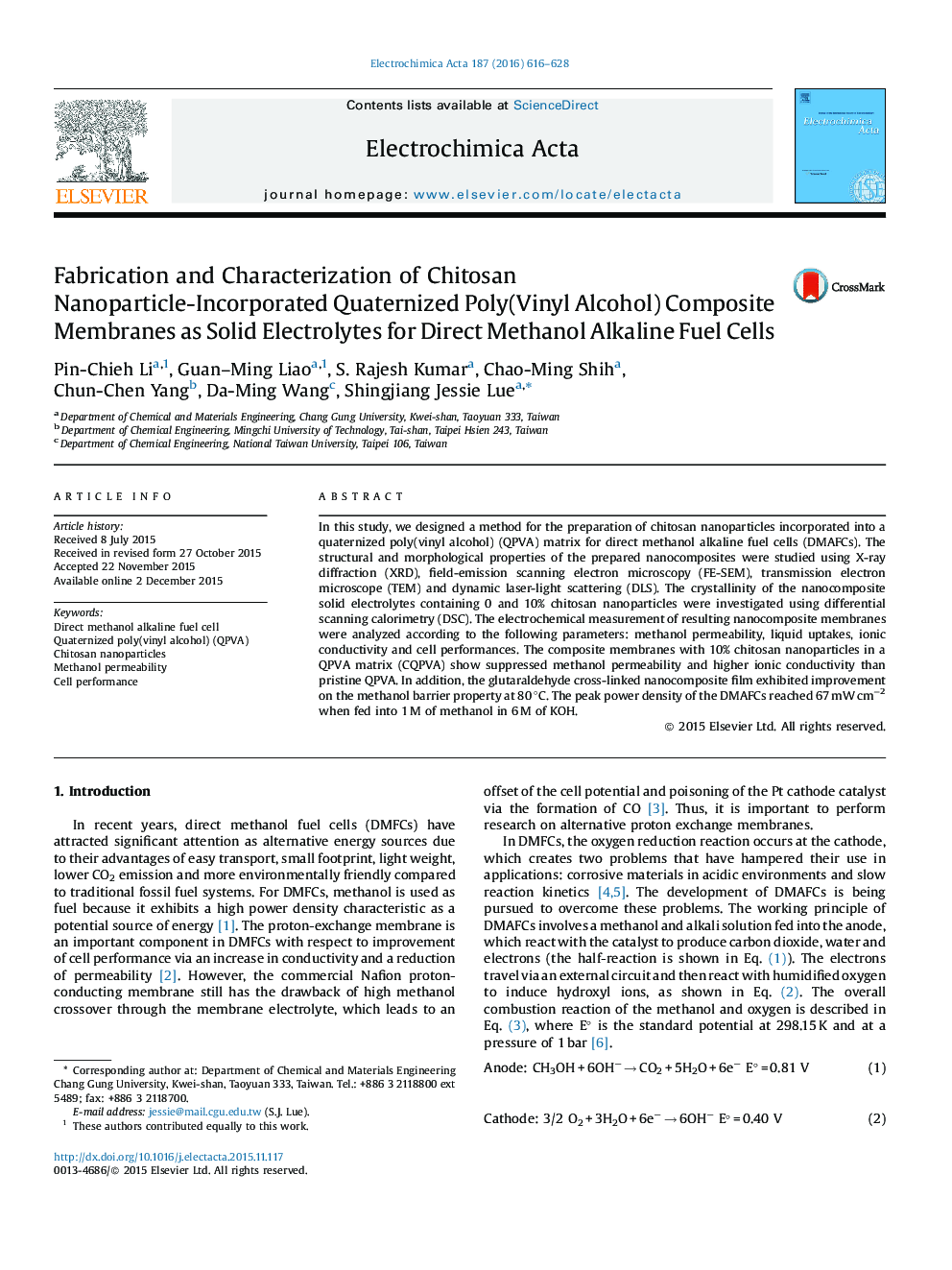| Article ID | Journal | Published Year | Pages | File Type |
|---|---|---|---|---|
| 183309 | Electrochimica Acta | 2016 | 13 Pages |
•Preparation of chitosan nanoparticles from bulk to enhance the degree of deacetylation.•The incorporation of chitosan nanoparticles into a QPVA matrix to form a nanocomposite membrane.•The nanocomposite constructed into thin-film membranes using the solution casting method.•To improve permeability, glutaraldehyde was cross-linked with the nanocomposite membranes.•A direct methanol alkaline fuel cell was studied at different temperatures.
In this study, we designed a method for the preparation of chitosan nanoparticles incorporated into a quaternized poly(vinyl alcohol) (QPVA) matrix for direct methanol alkaline fuel cells (DMAFCs). The structural and morphological properties of the prepared nanocomposites were studied using X-ray diffraction (XRD), field-emission scanning electron microscopy (FE-SEM), transmission electron microscope (TEM) and dynamic laser-light scattering (DLS). The crystallinity of the nanocomposite solid electrolytes containing 0 and 10% chitosan nanoparticles were investigated using differential scanning calorimetry (DSC). The electrochemical measurement of resulting nanocomposite membranes were analyzed according to the following parameters: methanol permeability, liquid uptakes, ionic conductivity and cell performances. The composite membranes with 10% chitosan nanoparticles in a QPVA matrix (CQPVA) show suppressed methanol permeability and higher ionic conductivity than pristine QPVA. In addition, the glutaraldehyde cross-linked nanocomposite film exhibited improvement on the methanol barrier property at 80 °C. The peak power density of the DMAFCs reached 67 mW cm−2 when fed into 1 M of methanol in 6 M of KOH.
Graphical abstractFigure optionsDownload full-size imageDownload as PowerPoint slide
